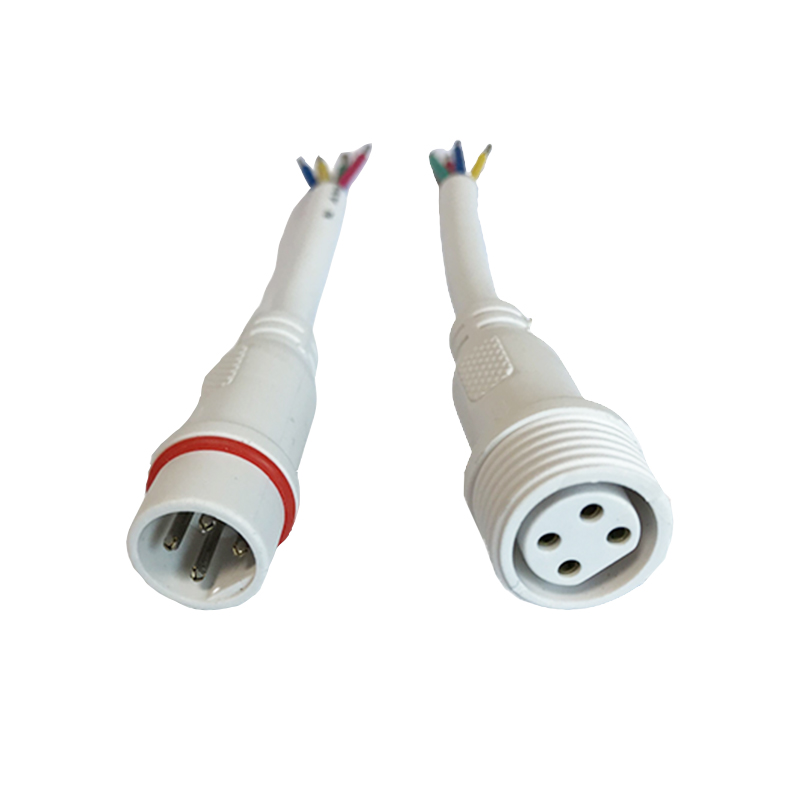News


News

How Waterproof Wire Splice Connectors Work: Achieving Dustproof and Waterproof Performance – A Comprehensive Technical Analysis from IP Ratings to Sealing Design
Release time:2025-03-17
viewed:302
In modern electrical engineering, waterproof wire splice connectors are critical components that ensure the safety and reliability of equipment, especially in outdoor lighting, new energy vehicles, and industrial applications. Their dustproof and waterproof performance directly determines the system's reliability and lifespan. This article will explore the three core technologies behind waterproof connectors: IP ratings, sealing materials, and mechanical design, revealing how they work together to provide effective protection.

The IP (Ingress Protection) rating, established by the International Electrotechnical Commission (IEC), uses a two-digit code to indicate a device's resistance to solid objects (e.g., dust) and liquids (e.g., water). For example:
IP67: 6 (completely dustproof) + 7 (protected against temporary immersion in 1 meter of water for 30 minutes).
IP68: 6 (dustproof) + 8 (protected against continuous immersion beyond 1 meter, as defined by the manufacturer).
IP65/IP66: Resistant to water jets, suitable for outdoor lighting, billboards, etc.
IP67/IP68: Resistant to immersion, ideal for underground pipelines, marine equipment, and other humid environments.
Key Tip: IP ratings are based on laboratory conditions. In real-world applications, the actual performance depends on the combination of sealing materials and structural design.
The secret to waterproof wire splice connectors lies in the innovation of sealing materials. Below are three mainstream solutions:
Silicone Gaskets: These materials offer high temperature resistance (-50°C to 200°C), excellent elasticity, and a long lifespan. They are commonly used in new energy vehicle charging ports and industrial equipment.
Heat Shrink Tubing: This low-cost solution is easy to install and tightly wraps cables when heated. It is widely used in household appliances and low-voltage circuit repairs.
Gel-Filled Sealing: Known for its self-healing properties, gel-filled sealing is resistant to vibration, temperature changes, and corrosion. It is often used in underwater sensors and military equipment.
Case Comparison:
In desert photovoltaic power stations with significant day-night temperature fluctuations, gel-filled connectors prevent seal failure caused by material expansion and contraction.
For home garden lights, a combination of silicone gaskets and heat shrink tubing balances cost and protection needs.
Precision threads ensure a tight seal between the connector housing and the gasket, preventing water ingress. High-end products may include torque-limiting designs to avoid deformation from over-tightening.
First Layer: Elastic gaskets at the cable entry point block external moisture.
Second Layer: Internal potting compounds or O-rings fill microscopic gaps.
Third Layer: Insulation between terminals prevents short circuits (e.g., ceramic bases).
Pre-Installation Cleaning: Remove oil and dust from cable surfaces to ensure proper sealing.
Regular Inspections: For outdoor equipment, check gaskets for aging or cracking every 6 months.
Environment Matching: Choose corrosion-resistant materials (e.g., gold-plated terminals + fluororubber) for saltwater environments.
waterproof wire splice connectors are not a "one-size-fits-all" solution. Their performance depends on the precise integration of IP ratings, material science, and mechanical design. Whether you're an engineer selecting components or a DIY enthusiast, understanding these technical details is essential for building a truly reliable waterproof barrier for electrical systems.